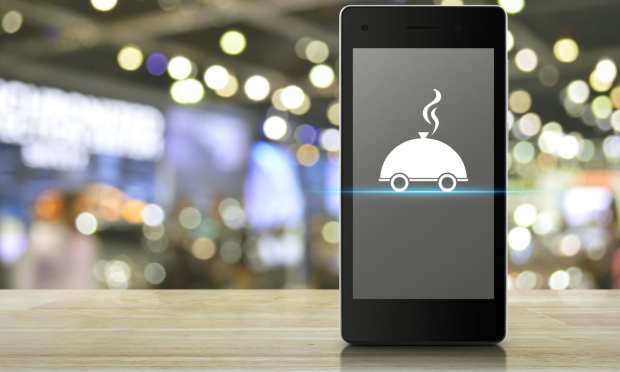C3 CEO: Omnichannel Food Hall Creates Physical Touchpoints For Virtual Brands

While the ghost kitchen model gained steam during the height of the pandemic, when even the most traditional brick-and-mortar restaurants could not generate much revenue from their dining rooms, newly vaccinated consumers’ return to restaurants may bring up new challenges for the model. Enter food technology platform and restaurant company C3 (short for “Creating Culinary Communities”), which has been creating brick-and-mortar spaces for its digitally native brands to engage consumers across channels.
On Wednesday morning (June 2), the company announced a $100 million deal with a Saudi Arabia-based investment company to bring 40 of its restaurant brands to the country. As part of this joint venture, the restaurant company is taking its soon-to-launch Citizens food hall global. The food hall, coming to New York City in July and to Atlanta in 2022, with locations planned in Seattle, Miami and California down the line, is integrated with C3’s digital platforms to provide an omnichannel take on the format.
“At Citizens, every vendor and culinary concept is owned and operated by C3, which provides us with the ability to connect with our customers on a much deeper level,” Sam Nazarian, founder and chief executive officer of C3 and its parent company SBE Entertainment Group, told PYMNTS in a recent interview. “We can leverage guest data and monitor trends across all of our brands to better provide our guests with menu items and offerings they want and can utilize our app technology to engage with users both on and off-site.”
Physical Touchpoints For Digital Experiences
The dine-in food hall experience will be integrated with the company’s proprietary Citizens Go mobile ordering and delivery app, which in addition to enabling off-premises ordering from the food hall will also offer perks for in-person visitors. In-app benefits include the ability to accrue loyalty rewards and to access exclusive menu items, among others, and the app will advertise perks for in-person visits, incentivizing consumers to engage in the physical world.
“Ultimately, consumers need to be able to ‘touch’ a digital concept for it to last, and our food halls provide a space so consumers can explore [and] be adventurous,” said Nazarian. He added that, “after a year of social distancing and isolation,” consumers want an experience that “feels much more personalized and authentic.”
Still, demand for digital off-premises ordering options remains elevated, and part of the strength of the Citizens food hall will be that, in contrast to more traditional food halls, customers will be able to choose between grab-and-go options, dine-in, and delivery. In Nazarian’s words, this will “seamlessly marry the virtual experience we’ve all grown so accustomed to in the last year with the immersive physical experience we’ve been craving.”
Nailing The Ghost Kitchen
Since C3’s launch in late 2019, the company has grown enormously. By the end of 2020, Nazarian said, the company had “nearly 200 digital kitchens and 15 new culinary brands.” In the last five months, the company’s growth has only accelerated, launching new brands, announcing new partnerships, and debuting new formats. The company certainly seems to be a ghost kitchen success story.
“C3 approached the ghost kitchen concept with maximum profitability and space utilization in mind, which were key drivers in our rapid growth and success,” said Nazarian, adding that the company takes advantage of “existing spaces and infrastructure” and repurposes them to create ghost kitchens that can prepare food for up to 10 C3 virtual brands at once.
“We estimate that each of our concepts generates up to $1 million in annual revenue,” he said, “and our model allows for ultimate revenue generation and maximum profitability.”
Succeeding In The Competitive Delivery Marketplace
Other factors that make C3’s virtual brands successful, he said, include “last-mile delivery strategy” and the meal’s presentation upon arrival. To the latter point, he cites the “Instagram-worthy presentation of our delivery items” as a major driver of value for customers.
Take, for instance, C3 brand Krispy Rice’s Instagram success. Vincenzo Rossy, senior director of openings for C3, told PYMNTS in a recent interview that the brand “reached new heights because of word-of-mouth and social media buzz.”
Nazarian predicts that third-party delivery apps will be an enduring part of the digital ordering experience, given the convenience they provide and the extent to which consumers have already grown comfortable ordering from them. He believes, however, that as restaurants attempt to navigate the tricky economics of the model, more will, like C3, “begin developing their own proprietary app-based platforms.”
Demand for delivery will remain elevated, Nazarian predicts, though it “will naturally stabilize” from height-of-pandemic levels as consumers’ options open up, with on-premises dining once again a possibility. Still, he believes the convenience of the channel cannot be discounted.
“Delivery is here to stay,” said Nazarian. “The pandemic has altered dining preferences enough that mobile ordering has become a regular part of our day-to-day routines.”